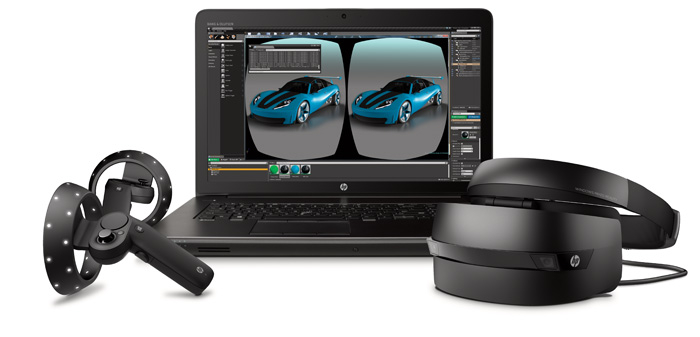HP launches VR toolkit for Unreal and offers VR workstations for a monthly fee
HP is ramping up its focus on enterprise VR, introducing a special toolkit to help designers bring their 3D models into Unreal Engine and extending its Device as a Service (DaaS) offering to include enterprise VR hardware. The company has also launched a Professional Edition of the HP Windows Mixed Reality Headset.
The HP VR Launch Kit for Unreal Engine is primarily designed to help HP customers in product design and architecture get 3D content out of CAD and into an authored VR experience ‘more quickly and more seamlessly’. It’s the result of an ‘exclusive partnership’ with Epic Games, who develops the 3D game and VR experience creation tool.
The Kit includes Datasmith, an Epic Games tools for ‘seamlessly’ importing CAD files into Unreal Engine, utilities to help speed up real-time performance and templates for creating cross sections and exploded views of models. Sample datasets are also included to help users experiment, including a Sportbike motorbike and Frank Lloyd Wright’s unbuilt Trinity Chapel building.
HP is also providing a ‘VR Performance Profiler’ which includes benchmarks and reports to help companies determine the right computer configurations that will be needed when deploying VR solutions.
One of the barriers for design and engineering firms in VR adoption is the big upfront cost of hardware, so HP has extended its Device as a Service (DaaS) offering to include VR workstations and head mounted displays. Firms can essentially lease kit for a set monthly fee over a pre-defined term. However, where DaaS differs from traditional leasing models is by offering a range of customisable services, including proactive management of devices, real time analytics, as well as configuration, installation and data migration.
Meanwhile, the new HP Windows Mixed Reality Headset Professional Edition has two differences to the consumer edition launched last year. This includes an easy to clean replaceable face cushion, which is good for multi-user environments, and a short cable so the Mixed Reality headset can be attached to a HP Z VR backpack without having long cables hanging down.
Common features across both devices include ‘inside out tracking’ so users can get up and running quickly without having to set up a lighthouse or do any calibration and flip up hinge on the display, which is useful if you need to frequently move in and out of VR. Tech specs include 1,440 x 1,440 resolution per eye, 90Hz refresh rate, and 100-degree field of view.
If you enjoyed this article, subscribe to AEC Magazine for FREE






